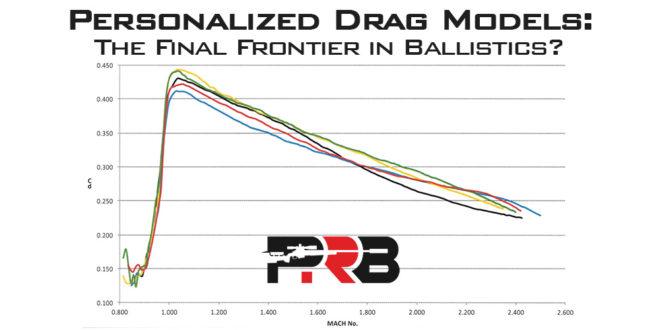RockyMtnMT
Official LRH Sponsor
I didn't. I patented radius bands on bullets.Steve, don't take this wrong, but, if you don't know what parabolic drag is then how did you get a patent to "reduce" it?
 Help Support Long Range Hunting Forum
Help Support Long Range Hunting Forum
I didn't. I patented radius bands on bullets.Steve, don't take this wrong, but, if you don't know what parabolic drag is then how did you get a patent to "reduce" it?
My umbrella collapses way before transonic or mach 1--- maybe I need a higher quality umbrella?I may be wrong, but I'll just think out loud about it here.
A shock wave is formed in front of our bullets, which is in the shape of a parabola. It is by itself traveling at the speed of sound (Mach 1).
The bullet picks up the shock wave while passing Mach 1. This is a big drag load, and I think of it like running with an open umbrella.
With each higher bullet speed over Mach 1 the umbrella closes a bit, reducing it's relative load. While the bullet slows to transonic, the umbrella opens more & more, becoming a bigger and bigger load.
That's how I functionally see it.
For each incongruity presented by the bullet's surface, where laminar flow is harshly disrupted, another parabola is formed.
That would be drive or crimp bands, and sometimes nose or base transitions. This only existing at supersonic velocities.
By subsonic the umbrella is fully released, letting go of that load.
Ok, I'm a bit scared to ask this because you very well may be able to answer it, which in turn means I will be obligated to read said answer and then I will need another drink, but how do you solve an equation on lift or drag when an object is in a vacuum? Aren't lift and drag absent in a vacuum?There is no parabolic drag. There's your oddly worded to some, patent PDR…which makes sense to me. Not to be confused with rotating bands like on a 155.
Then, there's parabolic drag polar as mentioned above which is a aircraft physics term, as it relates to models/in a vacuum expressed in mathematics and focused on lift (to over simplify it, for the purposes of this forum.)
They have nothing to do with each other.
I'm from lobster fishing country, we recommend Grundens for this situation and nothing else.My umbrella collapses way before transonic or mach 1--- maybe I need a higher quality umbrella?
How is whistlepig, what's it similar to? It's one of the few stops I never got off on when I lived in a state with real selection.Ok, I'm a bit scared to ask this because you very well may be able to answer it, which in turn means I will be obligated to read said answer and then I will need another drink, but how do you solve an equation on lift or drag when an object is in a vacuum? Aren't lift and drag absent in a vacuum?
Give me a couple minutes while I grab the Whistlepig and a glass!
I like them quite a bit. Tonight was 15 year, but every one is delicious. I was gifted a 18 year, but haven't worked up the nerve to open it yet. The 10 & 12 year are the sweet spot for price/drinkability. If you like a rye Old Fashioned the 6 year Piggyback is great. they are very smooth rye whiskeys with good notes and not just overly spicy.How is whistlepig, what's it similar to? It's one of the few stops I never got off on when I lived in a state with real selection.
Steve,I tried to get an answer in another thread to no avail.
Can anyone tell me what parabolic drag is? Evidently it is caused by drive bands? I have never heard of it.

HahaOk, I'm a bit scared to ask this because you very well may be able to answer it, which in turn means I will be obligated to read said answer and then I will need another drink, but how do you solve an equation on lift or drag when an object is in a vacuum? Aren't lift and drag absent in a vacuum?
Give me a couple minutes while I grab the Whistlepig and a glass!
Ooh nice. I do like a rye. The best I can get right now is High Plains from nearby in Park City. They're a reliable blender/bottler but they tend toward wide open throttle and 6-8 years as far as I can tell. Thanks. Hijack over.I like them quite a bit. Tonight was 15 year, but every one is delicious. I was gifted a 18 year, but haven't worked up the nerve to open it yet. The 10 & 12 year are the sweet spot for price/drinkability. If you like a rye Old Fashioned the 6 year Piggyback is great. they are very smooth rye whiskeys with good notes and not just overly spicy.
This is the first thing I've heard that makes sense thank youNot to talk for him but, It's not physics term "parabolic drag. "
It's parabolic (as in on the bands of the projectile/bearing surface) are parabolic and in doing so, (it alleges reduced drag.)
It sounds cool for marketing but it's horribly worded, I have to admit.
Some navy vets have told me there's a lot of parabolic drag in the asian ports.I flew for the US Navy and never ran into any Parabolic Drag until I went Clubbing!
That's where I found lots of it on Beer Bellied guys trying to hit on the women.
Steve,
Over my head as well! It appears to be a drag that is associated with lift created by aircraft wings.